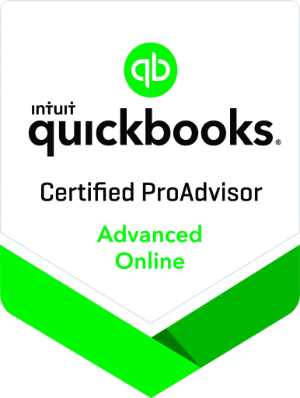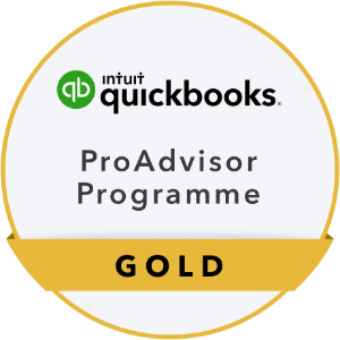There’s no denying that lockdown has hit us hard. According to research from the Institute of Fundraising, 92% of charities reported a fall in trading income during the lockdown period.
With research from the Small Charities Coalition showing that only 1 in 5 small charities was able to provide normal services during lockdown, it left the remaining 80% needing to alter or drop services altogether.
I spent some time talking to one of our clients about the impact lockdown had on her charity, and how digital transformation was key in helping them to achieve things they never before thought possible.
Di Vernon is the founder and chief executive of EmployabilityUK, a charity that’s on a mission to facilitate employer engagement to enhance the aspirations, opportunities and career prospects of enthusiastic and committed young people.
Here’s their story…
“Our digital transformation has been like a fairy-tale”
Employability skills are usually so far down the priority list, and yet they underpin every single role – whether you work as a surgeon, in an office, or serving the general public.
I’ve worked in the sector for a long time, so I know what works, and when I set up EmployabilityUK I knew exactly what I wanted to do with the charity. I’ve always believed that face-to-face delivery was our biggest strength, and the reason we were able to reach so many young people. But then lockdown hit and our world came to a standstill.
“It was absolute horror”
We had bookings for programmes that were due to run the next week and had no option but to cancel. These were hard to reach young people, from disadvantaged backgrounds, with special educational needs, mental health issues like anxiety, some of them homeless – and we had to let them down. I was panicking and wondering just what we were going to do. And the problem was, nobody knew how long lockdown was going to last, and so didn’t know what to advise.
You can’t do business-as-usual indefinitely with no income, so we had to make a decision – lose everything we’ve worked so hard to create or try to adapt.
So of course, I brought the board together and said, ‘This is the challenge, how do we take what we do best and deliver as close to the classroom experience as can be done?‘
That’s not easy when you’re a small charity with limited budgets at the best of times, and now there’s little income. But we discovered Zoom – an everyday tool that’s very familiar and affordable – and reinvented our programme around it.
“Online delivery is not something I ever dreamed we would do, but what the team has achieved through technology is amazing”
It’s forced us to rethink about how we design the programme, making it modular so that each module focusses on a different key skill. And it’s forced us to rethink how we deliver it to engage an audience at home. It’s now presented as a chat show, which has been fantastic for engaging the students and helping them to get to know their tutors online.
Young people are the hardest to reach, but we’ve had loads signing up, and every single one has acquired the self-motivation to complete the full programme.
What Zoom has given us is an easy switch solution for the future, because at any point, we can switch from face-to-face to online and back again without interrupting the delivery, so we know we’re safe in the event of another lockdown.
“It’s been a huge learning curve”
Because we’re dealing with young people, typically aged between 16-24, there’s a lot that we needed to consider about safeguarding, which is something we manage carefully on an ongoing basis.
But when it came to actually using Zoom everyday, I have to admit, it felt very strange and some people were very reluctant to put their cameras on. Thankfully, this has changed overtime, and now cameras are always on – in fact, people love Zoom so much that now they choose to do regular phone calls as video calls.
Then I had a slight wobble presenting one session. When you’re presenting in the classroom you get that face-to-face instant feedback, but when you’re on a webinar you’re talking to the screen and then it hits you – ‘Is anyone even listening?’
We’ve designed the online delivery so that it’s still a 2-way communication between the students and tutors. We ran one recently where the students were really animated in the chat window, all of them going crazy and wanting to contribute to the discussion. You have to remember, these are young people who perhaps have never envisioned a future for themselves, but they were all engaged through the online platform.
It has definitely taken some getting used to for us, but we’ve done it and the outcome is so good. Now we have a product that we would never have even considered before lockdown because our focus was always on face-to-face.
Beyond lockdown, digital transformation offers huge benefits
When the people you’re trying to help don’t even visualise a future for themselves, one of the biggest barriers we face as a charity is that our beneficiaries don’t want to leave their bedrooms. But digital delivery means that they don’t need to – we can reach them wherever they are.
One of the first activities we undertake is a ‘vision board’ where we get out the magazines, scissors and glue and create a collage to help them visualise what their future could be. When lockdown hit, I wondered how we could ever make this digital, but one of our volunteers figured it out. He even created a book about it – ‘The A to Z of Vision Boards’. Not only has this book helped him achieve a lifelong personal ambition to become a published author, it’s created a new revenue stream as all proceeds go directly back into the charity.
The calibre of volunteers we’ve seen coming to the charity in recent weeks is incredible. And we’ve asked many of them to help present workshops based on their skills and real-world experience.
Also, for the first time, we’ve put a virtual marcomms team together, who are working on a new marketing strategy to help us communicate what we do to reach new beneficiaries and encourage donations. The exciting thing about this team is that it includes students from the local university, who can give us a ‘young person perspective’ and tell us whether our plans are likely to be a hit with those we’re trying to reach.
And because everything is delivered online at the moment, it’s reduced our travel costs and given us more time to help our beneficiaries.
“We’re only now at the beginning of our journey”
Our new, digitally enhanced product has so much potential for UK education because now we have a ready-made, pre-packed solution that schools and colleges can roll out today. It allows us to better support educational establishments because what we’ve done doesn’t need to be timetabled. Teachers could set the programme as homework, so it’s done out-of-hours, and provide them with access to help their students online.
In the future, our intention is to blend face-to-face and online delivery more to give us greater flexibility over the programme.
For example, now we have the framework in place, we could extend the skills beyond employability and support our beneficiaries with wider life skills, like managing money, cookery or running a home. We could also extend the reach of our beneficiaries, capturing everyone from the homeless to the high-flyers.
Obviously, the trustees love what we’ve achieved – particularly the programme’s future prospects. Already we’ve had someone from the City Council make contact and take part in some of our sessions. They’ve seen how well we’re doing at engaging and helping disadvantaged young people and want to explore the possibility of us working together.
Our approach to digital transformation for the future is that it can’t be technology for technology’s sake. It must be used to enable us to create something that wouldn’t otherwise have happened. Our technology choices for the future are all about how it can help us to deliver a higher quality product to our beneficiaries.
Does it always end with ‘happily ever after’?
Hearing Di’s story is truly inspirational. For EmployabilityUK, the charity has been able to survive lockdown in finding a new way to deliver its services. And now it’s thriving because technology has enabled them to improve their offering, and potentially deliver more services to more people. It’s helped them enhance their internal operations, reduce costs and create new revenue streams.
But unfortunately, not every organisation undertaking a digital transformation experiences this level of success. According to research published on Forbes, 70% of digital transformation projects across all sectors fail.
Research from the Charity Digital Skills Report 2019 shows that more than two-thirds of charities want to use digital to increase their impact over the next 12 months, and yet half don’t yet have a digital strategy in place.
It should go without saying that unless proper planning has taken place, based on sound decision making, the only certainty is that the road ahead will be a bumpy one.
Charities with good governance make better decisions
Having sat on, and worked with, charity boards for many years, and I am a qualified charity governance professional, supporting charities through a range of services, including:
- Charity and Company Secretary: supporting your trustees in their decision making to ensure you comply with charity and company law.
- Policy writing and reviews: ensuring you take a consistent and compliant approach to help you meet your legal duties
- Risk Management: helping you identify areas of vulnerability to support you to manage and mitigate risk.
Charities with good governance make better decisions, because they have a better oversight of risk and finance and can better support their beneficiaries both now and into the future.
Click to discover how to set up your charity for digital transformation success by first establishing the mechanisms to ensure better decision making for your board:
.






